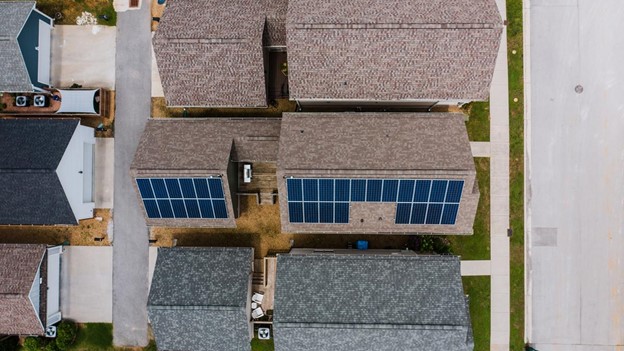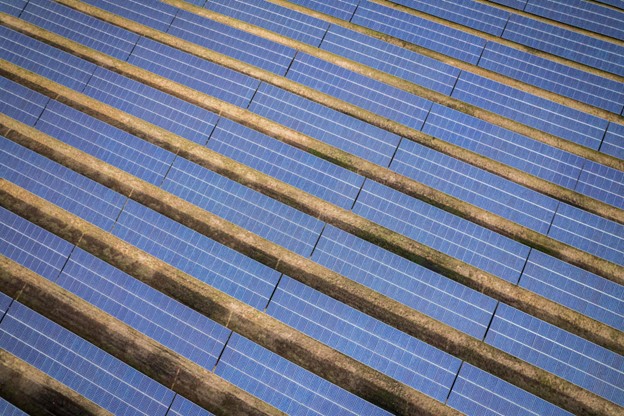California is at the forefront of the global energy transition, leveraging both its natural resources and policy innovations to integrate renewable energy into its grid. One of the most significant contributors to this transition is solar energy, which is rapidly transforming the state’s energy landscape. As demand for cleaner, more sustainable energy sources increases, California has embraced solar power and other renewables to meet its growing energy needs.

Solar Energy in California’s Power Grid
California’s power grid is a complex system responsible for supplying electricity to over 39 million people. It is the fourth-largest electricity producer in the nation and ranks third in consumption, trailing only Texas and Florida. This vast system must balance supply and demand from a variety of sources to ensure that homes, businesses, and industries remain powered year-round.
To better understand how power is supplied to the grid in California, it’s important to know where the energy comes from and how it’s distributed. In 2023, renewable resources, including hydroelectric power and small-scale solar power, supplied 54% of California’s in-state electricity generation. Natural gas contributed 39%, with nuclear power and imports from other states making up the rest.
One of the key statistics that highlights California’s unique approach to energy is that while the U.S. as a whole generated only 22.7% of its electricity from renewable sources, California’s figure was nearly 60%. This stark difference underscores the state’s commitment to moving away from fossil fuels like coal and natural gas, which account for 59.1% of electricity generation nationally but only 30.4% in California.

The Rise of Solar Energy in California’s Energy Mix
A pivotal aspect of California’s energy strategy is solar energy. Known for its abundant sunshine, California is a prime location for photovoltaic (PV) power. Solar energy in California has grown exponentially, thanks to state policies, incentives, and falling installation costs. Both utility-scale solar farms and residential rooftop installations contribute significantly to the energy grid.
Solar energy in California was originally seen as a supplementary source, but its potential has expanded dramatically over the last two decades. Utility-scale solar power plants now dot the landscape in the state’s sunniest regions, while rooftop solar panels are becoming a common feature of homes and businesses. By 2023, small-scale solar power systems played a significant role in helping California reach its renewable energy goals, contributing to the overall 54% share of electricity from renewables.
This growth is remarkable when compared to the broader national context. California’s solar power generation is one of the highest in the country. In fact, California accounted for over 30% of the entire nation’s solar power generation in 2023, a testament to its leadership in the renewable energy sector. Solar energy in California has become more than just a clean alternative; it is a core part of the state’s energy infrastructure.
How Renewable Energy Shapes the Grid
California’s transition to a greener grid has not been without its challenges. Integrating large amounts of solar energy into the grid requires careful management, especially given the intermittent nature of solar power. When the sun is shining, solar energy can supply a large share of the grid’s needs, but at night, the grid must rely on other sources like natural gas, hydroelectric power, or imported electricity.
The state has invested heavily in energy storage technologies, such as batteries, to help smooth out the fluctuations in solar generation. Energy storage systems allow excess solar energy generated during the day to be stored and used during peak demand hours, typically in the evening when solar generation decreases. This technology is crucial for ensuring that solar energy in California can provide consistent, reliable power throughout the day.
Another key factor in managing California’s energy grid is the import of electricity from neighboring states. Despite being one of the largest electricity producers in the U.S., California also imports more electricity than any other state. These imports, primarily from hydroelectric dams in the Pacific Northwest and coal plants in the Southwest, help balance the state’s energy mix, especially during periods of high demand or low renewable generation.

The Shift Toward Renewable Energy
California’s journey toward a more sustainable energy future began decades ago, driven by a combination of environmental concerns and state-level policy initiatives. The state has long been a pioneer in environmental regulations and clean energy mandates. For example, in 2002, California established its Renewable Portfolio Standard (RPS), which set ambitious targets for renewable energy generation. This policy has been updated several times over the years, with the current goal requiring 100% of California’s electricity to come from carbon-free sources by 2045.
These policies have been instrumental in reducing California’s dependence on fossil fuels, even though the state remains one of the largest consumers of oil in the U.S. In 2023, California was the seventh-largest producer of crude oil among the 50 states and ranked third in crude oil refining capacity. The state is also the largest consumer of jet fuel and the second-largest consumer of motor gasoline, primarily due to its extensive transportation network.
Despite its continued reliance on oil for transportation, California’s leadership in renewable electricity generation sets it apart from other states. The focus on cleaner power sources like solar energy in California is helping to reduce carbon emissions and mitigate the impacts of climate change. Additionally, the state’s low per capita energy consumption—ranked fourth-lowest in the nation—demonstrates its commitment to energy efficiency and sustainability.
The Future of Solar Energy in California
Looking ahead, solar energy in California is expected to play an even more significant role in the state’s energy future. The ongoing transition to electric vehicles (EVs) and the electrification of buildings will further increase demand for electricity, making renewable energy sources like solar even more critical. By 2030, California aims to have 5 million EVs on the road, and these vehicles will require a substantial increase in electricity supply.
As solar technology continues to improve, the cost of solar installations will likely continue to decrease, making it more accessible to homeowners and businesses. At the same time, innovations in energy storage and grid management will help address the challenges of integrating even higher levels of solar power into the grid.
The state’s commitment to expanding its solar capacity is evident in its regulatory and financial support for solar installations. California’s solar rebate programs and net metering policies have incentivized thousands of residents and businesses to install solar panels, reducing their electricity bills and contributing to the state’s renewable energy goals.
In addition to small-scale installations, utility-scale solar projects are being developed at an unprecedented rate. These large solar farms can generate hundreds of megawatts of electricity, feeding directly into the grid and helping California meet its energy needs without relying on fossil fuels.

Conclusion
Solar energy in California has moved from the fringes to the center of the state’s energy strategy. With nearly 60% of its electricity now coming from renewable sources, California is leading the way in the national transition to clean energy. Solar power, in particular, is a critical component of this shift, helping to reduce greenhouse gas emissions, improve air quality, and provide a sustainable source of electricity for the state’s growing population.
As the U.S. average for renewable electricity generation remains around 22.7%, California’s example shows what is possible when policy, technology, and natural resources align. Solar energy in California is not only meeting current energy demands but also positioning the state to lead the future of renewable energy in America. The state’s commitment to solar and other renewable sources is shaping a cleaner, more resilient power grid, one that will continue to evolve as California works toward its ambitious energy and climate goals.
If you’re considering adding a solar energy system to your home, now is a great time to take the leap. With the right system in place, you’ll not only reduce your electricity bills, but you’ll also enjoy the peace of mind that comes with energy independence and sustainability.
Reach out now to get started.



